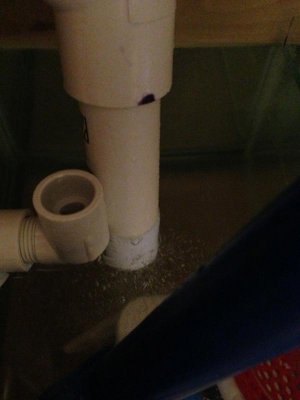Let me make sure I understand this correctly: You cracked the glass at the return bulkhead? You may as well forget the drain system issues: the tank is nothing more than a glass paperweight, or a reptile tank. You cannot fix this with a reseal, that is unless you have good insurance and a powerful shop vac, and want to experience first hand, a catastrophic tank failure. A cracked tank is not an lol, unless you have money to burn.
What is called for is a tank rebuild, replacing the cracked panel completely. Resealing is not even on the list of possible options, even remotely. If you are not versed in tank building methods and techniques, the best option is to replace the tank.
Another point is, the valve placement on a normal under tank installation is irrelevent. The only time it is of significance is with a long drop, such as into a basement. In that case you want the valve as close to the sump as possible.
In general, bubbles will not mysteriously, become a part of the siphon activity, unless there is an air leak in the plumbing, or the siphon inlet is sucking in air/bubbles from the overflow itself. I.E. the overflow is too shallow and the inlet is forming a vortex, or the "waterfall" is high and creating bubbles. (common when trying to minimze the "footprint" in the tank, or holes too high on the back of the tank"”cracked tank cause?) Silicone will not seal pvc joints, as you found out, so it is not a question of doing right or wrong, it just does not work. Another source of bubbles would be an out of adjustment open channel, which will behave as the durso stand pipe it is.
That said, it is no longer an issue, as you will be starting from scratch by first doing an R & R on the tank. But that is outside the scope of this thread.






